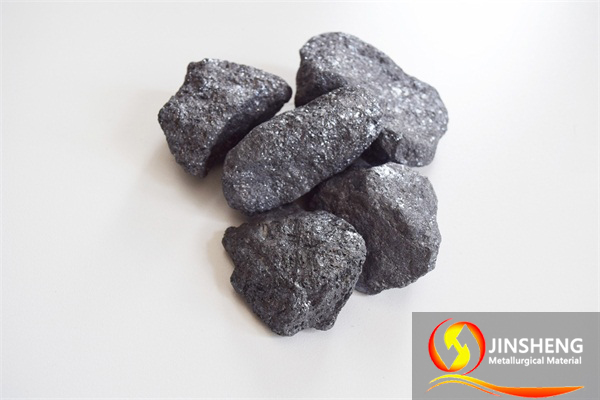What is high carbon silicon?
2025-06-20
In today's rapid iteration of industrial materials, high-carbon silicon is not as widely known as steel and aluminum alloys, but plays an irreplaceable role in a number of key areas by virtue of its unique properties. In this article, we will analyze high carbon silicon.

What Is High Carbon Silicon
Definition
High-carbon silicon, also known as furnace bottom silicon, silicon carbon alloy, high-carbon ferrosilicon, can be seen from the name of its composition and characteristics of the correlation. It is mainly composed of silicon and carbon, silicon content of 65% -70%, carbon content of 18% -20%, in addition to a small amount of silica, phosphorus, sulfur and other components.
Production process
High-carbon silicon is not produced out of thin air, but is prepared through a special process. It is produced from high-purity carbon powder, metallic silicon powder and low-sulfur, low-nitrogen carbon materials, and then processed through a series of processes to form a new alloy material. It is worth mentioning that high-carbon silicon is also a by-product of the silicon metal production process, which not only realizes the efficient use of resources, but also reduces its production costs.
Properties of High Carbon Silicon
Physical Properties
High-carbon silicon is extremely hard, second only to diamond, which makes it an excellent choice for abrasives. With a melting point of approximately 2700°C, high carbon silicon remains stable at high temperatures and can be used in applications where high temperature resistance is required. It also has good thermal conductivity, which is close to that of copper, allowing it to dissipate heat quickly.
Chemical and Electrical Properties
In terms of chemical properties, high-carbon silicon is highly resistant to acids, alkalis and high-temperature gases, and its properties remain stable even in harsh chemical environments.
In terms of electrical properties, after doping treatment, high carbon silicon can be used as a semiconductor material for high frequency and high power electronic devices, providing new possibilities for the development of the electronics industry.
What is the use of high carbon silicon
Iron and steel smelting industry
High-carbon silicon plays a crucial role in the iron and steel smelting process. It can effectively deoxidize and increase carbon, reduce the oxygen content in steel, improve the purity of steel, and then enhance the strength and toughness of steel.
At the same time, high carbon silicon can also promote graphitization, improve the plasticity and cutting performance of steel, so that the steel is more in line with a variety of processing needs.
Foundry Industry
In the foundry sector, high-carbon silicon functions as an inoculant. It promotes the crystallization of carbon and silicon in the ferrofluid, enhancing the strength and hardness of castings. Moreover, high carbon silicon can effectively reduce porosity and cracks in castings, significantly improve the surface quality and mechanical properties of castings, and increase the yield of castings.
Other applications
High-carbon silicon has applications far beyond the steel smelting and casting industries. In non-ferrous metal smelting, it can be used as a highly efficient reducing agent, widely used in the production of magnesium, titanium and other non-ferrous metals.
In the field of electrical materials manufacturing, high carbon silicon is involved in the production of semiconductor materials, solar cells and other high-tech products, helping the development of related industries.
What is the advantages of high carbon silicon?
Efficient deoxidization and cost reduction
High-carbon silicon has a high density, and after being put into the molten steel, it can quickly sink into the interior and fully combine with oxygen to realize the deep deoxidation of molten steel, which greatly improves the utilization rate of the deoxidizer.
In addition, the chemical reaction between silicon and oxygen to form silicon dioxide will release a large amount of heat, using this feature, high carbon silicon can replace the higher price of the traditional heating agent, in the converter and hearth steelmaking, to help enterprises reduce production costs and save electricity expenses.
Improve alloy recovery
Whether used alone or in combination with ferromanganese and ferrosilicon, high carbon silicon can significantly improve alloy recovery. Data shows that the recovery rate can be increased from about 8% to about 50%. When used in combination with ferromanganese and ferrosilicon, high carbon silicon can increase the recovery rate by a further 2%, while reducing the amount of aluminum and other alloying materials used, resulting in cost savings for the company.
Stable quality
During the production process, high carbon silicon can be adjusted by remelting process to ensure stable and reliable chemical composition, effectively avoiding the mixing of harmful elements and other inclusions.
After using high carbon silicon, its deoxidation products are easy to float, which will not pollute the steel liquid, and can also prevent the harmful effects of aluminum oxide and other inclusions, to protect the quality of steel, and at the same time, more environmentally friendly.
Conclusion
High-carbon silicon has become one of the key materials indispensable to the modern metallurgical industry by virtue of its price advantage and excellent technical performance. With the continuous progress of industrial technology, high-carbon silicon is expected to be applied in more fields and play a greater value.






